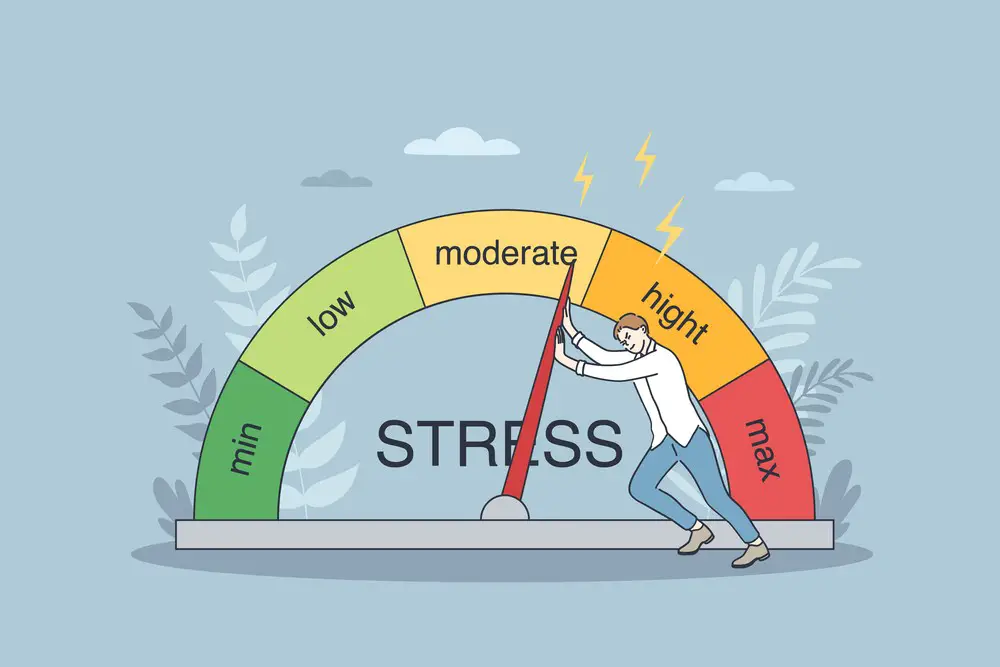As a BetterHelp affiliate, we receive compensation from BetterHelp if you purchase products or services through the links provided
Gym therapy is a growing trend that combines physical exercise with mental health support to improve overall well-being. The concept revolves around the idea that regular physical activity can significantly impact our mental and emotional health while offering a supportive environment for those struggling with various challenges. Gym therapy allows individuals to experience various benefits beyond conventional gym workouts.
With the guidance of trained therapists, gym therapy programs encompass a variety of exercises and movements tailored to individual needs and goals. These plans can aid in injury recovery and have even been found to help treat specific conditions. As gym therapy gains recognition in the healthcare community, its accessibility is expanding with affordable and widely available options, making it an increasingly popular choice for individuals looking to enhance their physical, mental, and emotional wellness.
Key Takeaways
- Gym therapy blends physical exercise with mental health support for holistic well-being.
- Customized workouts with therapist guidance provide physical and mental benefits, including injury recovery and treatment for certain conditions.
- Accessibility and affordability contribute to gym therapy’s growing popularity as an alternative or complement to traditional treatments.
 Understanding Gym Therapy
Understanding Gym Therapy
Gym therapy combines the benefits of exercise and therapeutic techniques, helping you to improve your physical and mental health. It’s a holistic approach that treats your body and mind, impacting your overall well-being.
You’ll perform various exercises targeting your specific needs when gym therapy. For example, if you struggle with stress, your gym therapist might recommend calming activities such as yoga or Pilates and aerobic exercises for better endurance. If you’re experiencing chronic pain, the focus might be strengthening your muscles and improving flexibility.
Some key aspects of gym therapy include:
- Individualized Exercise Plans: Gym therapists tailor workouts to your unique needs, considering your fitness levels, health concerns, and personal goals.
- Mental Health Support: As you work on physical fitness, gym therapists also help you build mental resilience through techniques like mindfulness, deep breathing, and visualization.
There are numerous health benefits associated with gym therapy, such as:
- Improved Cardiovascular Health: Regular exercise strengthens your heart and improves blood circulation, reducing the risk of heart disease and high blood pressure.
- Enhanced Mood: Exercise triggers the release of endorphins, chemicals that help you feel happier and more positive.
- Reduced Stress Levels: Physical activity lowers stress hormones and aids your body in relaxation, helping you manage stress more effectively.
- Better Sleep: Exercises can improve sleep quality, helping you feel rested and rejuvenated daily.
In conclusion, gym therapy utilizes exercise to promote physical and mental health, offering a comprehensive approach to improving your overall well-being. Embrace the idea of looking after your body and mind simultaneously, and soon, you’ll start experiencing the positive effects of gym therapy in your everyday life.
Physical and Mental Benefits
Gym therapy is greatly beneficial for your physical and mental health. Engaging in regular exercise routines can help reduce anxiety levels, improve mood, and alleviate symptoms of depression, which in turn enhances your overall well-being.
Physical Benefits:
- Strengthens muscles
- Improves cardiovascular health
- Boosts flexibility and balance
- Enhances endurance
Incorporating gym therapy into your lifestyle can lead to remarkable physical benefits. As you engage in different workouts, you’ll notice an increase in muscle strength and tone. Moreover, gym therapy aids in cardiovascular health by strengthening your heart and improving blood circulation. Another essential advantage is the improvement of flexibility and balance, which can prevent injuries. Lastly, consistently participating in gym therapy allows you to build your endurance and perform more intense exercises over time.
Mental Benefits:
- Reduces anxiety
- Enhances mood
- Alleviates depression
- Boosts self-confidence
- Improves sleep
The impact of gym therapy on mental health is equally significant. By participating in gym therapy sessions, you can effectively reduce anxiety and stress levels by releasing endorphins—natural chemicals that relieve pain and create a feeling of happiness. Gym therapy can also help elevate your mood and combat depression, offering a productive outlet to express yourself and release pent-up emotions.
Additionally, gym therapy promotes self-confidence as you become more skilled in exercising and witness your progress. Lastly, incorporating consistent gym therapy into your lifestyle can improve sleep patterns, ensuring you’re well-rested and ready to take on each day.
Remember, gym therapy offers numerous physical and mental benefits that greatly impact your well-being. You’ll invest in yourself and your future health by making it a routine part of your life.
 Role of Therapists
Role of Therapists
As you embark on your gym therapy journey, you’ll have various professionals to guide you. The role of a therapist in gym therapy is crucial, as they are responsible for designing personalized programs, monitoring your progress, and offering support throughout.
A licensed therapist who is well-versed in gym therapy will assess your needs and develop a plan tailored to your requirements. This might include exercises to improve your physical and mental well-being, such as stretching and strength training. As you work on your goals, they will also monitor your form and technique to ensure you perform exercises safely and effectively.
Moreover, therapists often collaborate with other professionals to help you make the most out of your gym therapy sessions. This can lead to a multidisciplinary approach to address different aspects of your health, such as combining nutritional advice with exercise plans.
Some benefits you may experience from gym therapy with a professional therapist include:
- Improved physical fitness and strength
- Reduced stress and anxiety levels
- Increased confidence and self-esteem
- Enhanced overall well-being
Remember, it’s essential to consult with a licensed therapist before embarking on your gym therapy journey. They have the knowledge and experience to help you harness the power of exercise to improve your mental health and well-being. The support and guidance offered by your therapist will play a vital role in your success and ensure that you make steady progress, one step at a time.
Exercises and Movements
Gym therapy offers various exercises and movements designed to help you improve your physical and mental well-being. By incorporating different types of training and workouts, you can work on your flexibility, range of motion, and overall fitness.
To get started, try incorporating these exercises into your routine:
- Strength training: Lifting weights or using resistance bands can help build muscle, improve bone density, and boost your metabolism. Strength training can also improve balance and coordination, making daily tasks easier.
- Cardiovascular exercises: Walking, running, swimming, and cycling are all great ways to increase your heart rate and improve your cardiovascular health. These workouts also help burn calories and improve mood by releasing endorphins.
- Flexibility exercises: Incorporate stretching and yoga into your workout routine to enhance your flexibility. Increasing your range of motion is important for maintaining a proper posture and preventing injuries.
- Functional movements: Practicing functional movements like squats, lunges, and push-ups can help you perform everyday activities more efficiently. These exercises help you build strength, flexibility, and coordination in the muscles you use most often.
- Balance exercises: Improve your overall stability by incorporating balance-focused exercises such as standing on one leg or walking along a straight line.
As you continue your gym therapy journey, it’s essential to remember that variety is key. Experiment with different exercises and movements to find what works best for you and keeps you motivated. Always listen to your body and adjust your routine accordingly. With consistency and patience, you’ll be on the path to a healthier and happier lifestyle.
 Application in Injury Recovery
Application in Injury Recovery
Gym therapy plays a vital role in injury recovery, especially for those suffering from sports injuries. It offers an effective way to regain function and reduce pain while focusing on strengthening and rehabilitation. Here’s how gym therapy can aid your injury recovery journey.
Firstly, gym therapy allows personalized recovery plans tailored to your needs and goals. This is particularly important in the case of sports injuries, where the fitness level and personal requirements of athletes can vary widely. Your therapist can create a program to rehabilitate the injured area, helping you gradually regain strength and avoid re-injury.
Consistent gym therapy sessions can alleviate pain during the rehabilitation process. Low-impact resistance exercises, which can be incorporated into your routine, are beneficial in reducing discomfort. They enable the gradual rebuilding of muscle strength around the injury without putting undue stress on the affected area. Some examples include:
- Swimming or water aerobics for lower-body injuries
- Bodyweight exercises like push-ups and squats for upper-body injuries
- Resistance bandwork for joint support
In addition to strengthening, gym therapy also targets improving flexibility and balance, essential factors in reducing the risk of future injuries. Your recovery plan will integrate various stretching exercises and core stabilization activities. This approach helps you maintain a balanced and healthy body, better equipped to withstand the demands of your favorite sports.
Lastly, gym therapy allows for psychological support during injury recovery. It provides a structured environment where you can rebuild your confidence, celebrate small victories, and progress at your own pace. As you overcome pain and regain strength, you’ll gain a renewed sense of achievement, pushing you closer to your pre-injury capabilities.
With dedication and the proper guidance from your gym therapist, applying these concepts can be the key to a successful and sustainable recovery from sports-related injuries.
Cost and Affordability
When considering gym therapy, you might be concerned about the cost and affordability of incorporating it into your life. But don’t worry – we’re here to break it down for you.
First, let’s take a look at gym memberships. The average gym membership can vary greatly depending on the location, facilities, and additional services. To give you a better understanding, here’s a quick breakdown:
- Budget gyms: These options typically offer basic facilities starting as low as $10-$20 per month.
- Mid-range gyms: These facilities have more amenities, like group classes, and usually cost around $30-$70 per month.
- Premium gyms: Known for their exclusive services and high-end equipment, these establishments can range anywhere from $100-$200 per month (sometimes even more!).
Evaluating what you need most in a gym is important to choose the best option. Watch for promotional offers, which can save you a pretty penny.
Now, let’s talk about health insurance. Many insurance providers recognize the benefits of gym therapy and offer discounts or incentives for gym membership costs:
- Partial reimbursements: Some insurances will reimburse you a portion of your gym membership fees after a specific number of visits, encouraging regular exercise.
- Discounted memberships: Several health insurance companies partner with gyms, offering discounted rates to their policyholders.
- Wellness Rewards Programs: Some insurance providers reward active lifestyles with points that can be exchanged for discounts or gift cards.
To take advantage of these cost-saving measures, be sure to check with your health insurance provider to see if they offer any of these programs.
Finally, don’t forget to explore alternative options that offer affordability while reaping gym therapy’s benefits. Consider trying:
- Community centers: Many towns and cities have community centers, often providing affordable membership and access to fitness facilities.
- Outdoor activities: Depending on your preferences, outdoor activities like running, hiking, or cycling could be a great low-cost or even free alternative to gym therapy.
Remember, weighing the costs against the therapeutic benefits gym therapy can bring to your life is crucial. With some research and some budgeting, you can make this vital contribution to your well-being more accessible and feasible. Happy exercising!
 Use in Treating Specific Conditions
Use in Treating Specific Conditions
Gym therapy can be effective in treating a variety of health conditions. You can alleviate symptoms and improve your overall well-being by engaging in physical activities. This section will discuss how gym therapy can help those with arthritis, cancer, stroke, and depressive symptoms.
Arthritis: If you’re struggling with arthritis, incorporating gym therapy into your routine can bring some relief. Low-impact exercises such as swimming, cycling, and walking can help reduce joint pain, increase flexibility and strength, and improve overall well-being. Remember to start slow and gradually increase your exercise intensity to avoid overexertion.
Cancer: Gym therapy can be a valuable tool for those undergoing cancer treatment. Engage in gentle exercises like yoga, stretching, and aerobic activities to mitigate treatment side effects and boost your mood and energy levels. However, consult your healthcare professional before starting an exercise program or after cancer treatment.
Stroke: Recovering from a stroke can be challenging, but gym therapy can help you regain movement, balance, and coordination. Workouts focused on strength training, flexibility, and balance exercises are beneficial for stroke survivors. Collaborate with a physiotherapist to develop a personalized plan that suits your needs and abilities.
Depressive Symptoms: Battling depressive symptoms can make daily life difficult, but engaging in gym therapy can make a significant difference. Regular exercise releases endorphins, improving your mood and reducing feelings of anxiety and stress. Choose activities you enjoy, such as dancing or team sports, to make gym therapy fun and engaging to improve your mental health.
Incorporating gym therapy into your life can be a game-changer when managing various health conditions. It’s essential to consult with your healthcare provider and tailor your gym therapy program to your specific needs. Don’t forget to be patient with yourself, celebrate your progress, and enjoy the benefits of a healthier, happier life!
 Gym Therapy for Various Demographics
Gym Therapy for Various Demographics
Gym therapy can benefit many people, from athletes to adults, and even during pregnancy. Each demographic has its own unique needs and goals, but the common thread is improved physical and mental health.
Athletes find gym therapy particularly useful for enhancing their performance and preventing injuries. Whether it’s a professional athlete or weekend warrior, incorporating targeted workouts and stretches to address muscle imbalances and areas of tightness is crucial. As an athlete investing in gym therapy, you may notice increased flexibility, improved recovery times, and optimized performance.
Adults of all ages can reap the benefits of gym therapy. In the fast-paced, stressful world we live in, taking time for self-care at the gym can provide relief from common adult challenges such as:
- Dealing with stress
- Improving sleep quality
- Boosting immune function
- Enhancing mental clarity
As you explore a variety of gym therapy options, including clinically guided workouts or group classes, your overall physical and mental wellness may improve significantly.
Pregnancy is a special time; gym therapy can help expectant mothers maintain strength, stamina, and a healthy mindset. A professional should always guide exercises tailored to pregnant individuals, as specific precautions must be considered. Some of the key benefits of gym therapy during pregnancy include:
- Better posture and balance
- Easier labor and childbirth
- Faster postpartum recovery
- Improved mood and reduced stress
Incorporating gym therapy into your routine during pregnancy, when approved by your healthcare professional, can offer a supportive and nurturing environment to stay strong and confident throughout this incredible journey.
In conclusion, the power of gym therapy spans various demographics, each with its unique needs and benefits. By considering your personal situation and tailoring the approach accordingly, gym therapy can be a valuable part of maintaining your overall well-being.
 Physical Therapists and Group Classes
Physical Therapists and Group Classes
As a fitness enthusiast looking for a holistic approach to your physical well-being, you might consider attending gym therapy sessions held by physical therapists. These professionals can offer invaluable guidance and support during group classes that you participate in. And don’t worry – the camaraderie you experience in these group classes and the thrill of social interaction can boost your motivation, too!
Physical therapists assess, diagnose, and treat various muscular, joint, and movement-related issues. When you attend group classes led by these experts, you can:
- Learn proper exercise techniques that minimize the risk of injury and maximize efficiency
- Get personalized guidance on exercise modifications tailored to your unique needs
- Gain expert supervision and constant monitoring of your progress
Group classes led by physical therapists offer a variety of benefits to keep you engaged and on track with your fitness goals. These include:
- Social interaction: Attending group classes allows you to connect with like-minded individuals, providing an opportunity for friendship, support, and motivation.
- Accountability: Being part of a group creates a sense of commitment that may encourage you to show up and put forth your best effort, time and time again.
- Cost-effectiveness: Group classes typically come at a lower price than one-on-one sessions with a physical therapist, making them an affordable option to stay healthy and active.
Remember, participating in group classes under a qualified physical therapist’s guidance ensures a safe and effective workout and fosters a sense of community and motivation that benefits your overall well-being. Give it a try and experience the positive impact on your fitness journey!
 Gym Therapy vs. Medication
Gym Therapy vs. Medication
When comparing gym therapy and medication, it’s essential to consider the pros and cons of each option. Gym therapy focuses on improving your mental health through physical activity, while medication typically involves prescribed drugs to alleviate symptoms.
Gym Therapy Benefits:
- No side effects: Unlike medications, which can cause unwanted side effects, gym therapy helps you improve your mental health without any harmful consequences.
- Reduced risks: Regular exercise reduces the odds of developing chronic health issues like heart disease, diabetes, and obesity.
- Building resilience: Physical activity can help you build resilience to stress and anxiety, improving your overall emotional well-being.
Medication Benefits:
- Symptom relief: Medications can provide quick, effective relief from symptoms of mental health issues.
- Flexibility: There is a vast array of prescribed drugs to choose from, providing options for individual needs.
- Proven effectiveness: Many medications have a proven track record in treating various mental health conditions.
However, gym therapy may not be suitable for everyone. Some may find it difficult to engage in physical activity due to mobility issues or medical conditions. In contrast, others may prefer medication due to the convenience and ease of use.
When weighing gym therapy against medication, consider the following factors:
- Costs: Gym therapy can be more cost-effective in the long run, as medications can be expensive, particularly if you require them for an extended period.
- Personal preferences: Depending on your lifestyle and personal preferences, you might find either gym therapy or medication more suitable for your needs.
- Accessibility: Depending on your location and resources, accessing a gym or workout facility might be easier than a medical professional.
- Physician guidance: Consult a healthcare professional to discuss the best approach to treating your mental health condition.
In conclusion, gym therapy and medication have their merits, and choosing between them ultimately depends on your needs and preferences. Maintaining open communication with healthcare professionals and staying informed can help you make the most suitable choice for your well-being.
Additional Supports
Gym therapy can be even more effective when paired with additional support. These supports help create a comfortable and motivating environment to enhance your overall experience.
Support Groups: Joining a support group can greatly contribute to your mental and emotional well-being. Consider joining a group of like-minded individuals on their wellness journey alongside your gym therapy sessions. You can share experiences, gain valuable insights, and feel more connected knowing you’re not alone.
Comfortable Environment: A key factor to success in gym therapy is ensuring your surroundings are as comfortable as possible. This includes:
- Choosing a gym that feels welcoming and safe
- Wearing workout clothes and shoes that make you feel good
- Picking your preferred exercises and equipment
These elements will make staying motivated and enjoying your gym therapy sessions easier.
Motivational Techniques: Keeping your motivation strong is essential for sustaining progress in gym therapy. Here are some ideas to help you stay inspired:
- Set clear, achievable goals for your fitness journey
- Reward yourself when you reach milestones
- Keep a progress journal to track your improvement
- Plan workout routines with your favorite activities
Remember, gym therapy is a personal journey that should be enjoyable and tailored to your needs. By incorporating these additional supports, you’re taking care of both your physical health and emotional well-being.
Preparation for Gym Therapy
Before you embark on your gym therapy journey, it’s important to be well-prepared to maximize your experience. Here are some steps to get you ready:
- Consult your healthcare professional: Discuss your plans with a doctor or therapist to ensure gym therapy suits you. They can also recommend appropriate exercises, considering your physical and emotional condition.
- Set realistic goals: Write down your fitness objectives, focusing on achievable targets to boost your motivation and track progress. It can be helpful to break larger goals into smaller, manageable tasks.
- Choose the right facility: Select a gym with a comfortable and supportive environment. Look for qualified staff, well-maintained equipment, and various classes catering to your needs and preferences.
- Plan your schedule: Incorporate gym therapy sessions into your routine, striving for a balanced lifestyle. Consistency is key; allocate designated days and times for your workouts.
- Prepare your gym bag: Pack essential items like a comfortable workout outfit, supportive shoes, a water bottle, and a towel. Don’t forget any necessary medication or personal items to help you feel at ease during your sessions.
- Warm-up and stretch: Before each workout, take the time to warm up and stretch your muscles. This will help prevent injury and improve your overall performance.
- Listen to your body: Gym therapy is about healing and self-care, so always pay attention to your body’s signals. If something feels wrong, take a break or modify the exercise according to your needs.
By following these steps, you are on your way to a successful and enjoyable gym therapy experience. Trust the process, and be patient with yourself on this healing journey.
Societal Perception of Gym Therapy
You may have noticed a growing trend in society where gym therapy is becoming an increasingly popular way to improve mental and physical well-being. Celebrities and athletes are endorsing this practice, showing that it can benefit everyone.
Stigma: It’s important to acknowledge the stigma surrounding seeking help for mental health issues. However, integrating therapy with fitness activities seems to break down some barriers, making it more acceptable for people to attend these sessions. You’ll find that gym therapy can turn fitness into a form of self-care, which helps challenge and change the negative perceptions surrounding mental health.
Real-Life Impact: Gym therapy is not just another fad. There are genuine testimonies from people who’ve experienced significant improvements in their lives. Gym therapy can help bring a more balanced approach by focusing on both mental and physical fitness. This can lead to increased confidence, reduced stress, and improved relationships.
Celebrities: Prominent personalities like actors and sports stars have shared their positive experiences with gym therapy. This further validates it as an effective method for self-improvement and helps eliminate the stigma surrounding mental health and fitness therapy.
Certified Therapists and Coaches (COA): As the popularity of gym therapy grows, so does the demand for qualified professionals in this field. A certified therapist or coach can provide appropriate guidance, tailoring gym therapy sessions to meet your needs. Make sure to entrust your wellness journey to a certified professional to reap the full benefits of gym therapy.
In conclusion, as society embraces gym therapy, it is becoming a more recognized and valid form of self-care. By focusing on both the mind and body, you can achieve a higher level of well-being and self-improvement. Start exploring gym therapy today and take steps towards a happier, healthier you.
Frequently Asked Questions

What are the benefits of gym therapy?
Gym therapy offers numerous benefits, including:
- Improved physical strength and endurance
- Stress relief and mood improvement
- Enhanced self-confidence
- Better sleep quality
- Reduced risk of chronic health issues
Combining exercise with therapy can facilitate personal growth and overall well-being.
How do I find a fitness therapist near me?
To find a fitness therapist, consider these options:
- Searching online for local professionals and clinics
- Asking your primary care physician for recommendations
- Inquiring within your local gym or fitness center
What is the role of a fitness therapist?
A fitness therapist’s role encompasses:
- Assessing your current fitness and health status
- Designing personalized exercise programs
- Offering guidance and support throughout your fitness journey
- Monitoring your progress and adjusting plans as needed
- Collaborating with other healthcare professionals
Can gym therapy help with mental health?
Yes, gym therapy can positively impact mental health by:
- Releasing endorphins that help reduce stress and anxiety
- Promoting relaxation through physical activity
- Fostering social connections and support systems
- Providing a sense of accomplishment and self-efficacy
Is gym therapy suitable for all ages?
Gym therapy can be tailored to accommodate people of all ages, with modifications to suit individual needs, restrictions, and fitness levels. Always consult a fitness therapist or healthcare professional to ensure appropriate and safe exercise plans.
How to get started with gym therapy?
To begin gym therapy, follow these steps:
- Consult your doctor to discuss any potential risks or limitations
- Research fitness therapists in your area
- Schedule an initial consultation or assessment
- Establish your personal goals and plan your fitness routine
- Commit to consistency and enjoy the journey towards improved well-being
Clear Signs You May Need Gym Therapy
- Constant Fatigue: If you’re perpetually tired despite adequate sleep, it could be a sign of emotional or physical stress that gym therapy can address.
- Chronic Pain: Persistent aches or pains that aren’t resolved through traditional methods may benefit from the physical component of gym therapy.
- High Stress Levels: If your stress meter is constantly running high, the mental health support in gym therapy can offer relief.
- Depression or Anxiety: Mental health issues can have physical symptoms. Gym therapy can help treat both the body and mind.
- Difficulty Coping: If life’s challenges make you feel overwhelmed or stuck, gym therapy can provide a structured environment to help you cope.
- Limited Range of Motion: Trouble with flexibility or movement could indicate the need for targeted physical therapy exercises, often included in gym therapy.
- Frequent Emotional Outbursts: If you’re having frequent mood swings or emotional episodes, the mental health component of gym therapy can help stabilize your emotions.
- Post-Injury Struggles: If you’re recovering from an injury and not making the progress you’d like, gym therapy can accelerate the healing process.
Goals to Achieve Through Gym Therapy
- Improved Mental Clarity: One primary goal is to gain better mental focus and clarity, which can impact every aspect of your life.
- Physical Rehabilitation: Restoring physical function is often a major goal for those recovering from injuries.
- Emotional Resilience: Building emotional strength to handle life’s ups and downs more effectively.
- Skill Development: Whether it’s learning new exercises or ways to manage stress, gym therapy provides the tools you need.
- Holistic Health: Achieving a balance between physical, emotional, and mental well-being.
- Personal Growth: Through the emotional and mental aspects of the program, aim for personal development and better self-understanding.
- Enhanced Self-Esteem: As you progress through your customized routines, an increase in self-esteem is often a natural outcome.
- Community Support: One of the less obvious goals might be to create a support network with others going through similar experiences.
- Pain Management: Learning new techniques for handling chronic pain can be another crucial objective.
Setting these goals and recognizing the signs that you may need gym therapy are key steps toward embracing a healthier, more fulfilling life.
Feeling the Burn or Just Burning Out? Signs of Progress and When to Pivot to Talk Therapy”
Signs of Progress in Gym Therapy
- Improved Energy Levels: If you find yourself less fatigued and more energetic, that’s a sign your body and mind are reaping the benefits.
- Enhanced Mood: Noticeable improvements in your emotional state, such as reduced anxiety or depression symptoms, are positive indicators.
- Pain Reduction: If chronic pains are subsiding or easier to manage, you’re on the right track.
- Increased Physical Capability: Mastering new exercises or noticing greater strength and flexibility are signs of physical progress.
- Better Coping Mechanisms: If you find yourself handling stress or challenges gracefully, your mental health is likely improving.
- Consistency: Sticking to your gym therapy sessions without dreading them is an encouraging sign of progress.
- Self-Reflection: More self-awareness and understanding of your emotional triggers indicates mental and emotional growth.
When to Consider Focusing More on Talk Therapy
- Plateauing Emotionally: If you’re not seeing any significant improvements in your emotional well-being, even as your physical health improves, it might be time to consider supplementing with talk therapy.
- Unresolved Issues: If you’re constantly pondering unresolved issues or traumas before, during, or after your gym sessions, talking them out could provide the breakthrough you need.
- Excessive Stress or Anxiety: Should stress levels increase despite your physical activity, this could signal a need for more focused mental health intervention.
- Complex Emotions: If you’re experiencing complex feelings that exercise alone isn’t resolving, talking through these can be beneficial.
- Disconnect Between Mind and Body: If your physical health is improving. However, if you’re still not “feeling” better mentally, exploring these emotions in a talk therapy setting may be helpful.
- Dependence on Physical Relief: If physical exercise is becoming a form of escapism but isn’t solving the issue, talk therapy can provide a more balanced approach.
Understanding these signs can help you tailor your wellness journey more effectively, knowing when to celebrate your gains or enrich your approach with talk therapy.
From Life’s Tumults to Truth-Teller: Jacob Maslow’s Journey Through Mental Health and Family Strife”
Hello, I’m Jacob Maslow. I pop a Lexapro every morning, not as a sign of defeat, but as a fist-bump to my well-being. I’ve spent countless hours on the therapy couch, taking innumerable strides during my long meditative walks. My life has been a complex tapestry of ups and downs, partly woven by my own experiences with mental health and an entangled relationship with an ex-spouse whose narcissism escalated into full-blown emotional chaos.
Years after our divorce, the court battle over the shared custody of our kids rages on. I had a heartwarming relationship with my children until my ex decided to alienate them from me, flouting court orders and denying me any form of communication with them. I had always dreamt of a life where two households could coexist peacefully for the sake of our kids. Instead, I found myself in a never-ending cycle of legal skirmishes because of an ex-spouse who viewed our children as pawns rather than human beings deserving of love from both parents.
But let me tell you, I don’t write about these challenges to wallow in misery. I write to lift the veil on mental health issues and the pernicious effects of narcissistic relationships. Because I believe that no matter the hurdles, anyone can vault over their mental health challenges. My articles aim to light a path for those wrestling with similar issues, whether deciphering a narcissistic partner’s cryptic behavior or grappling with anxiety and depression.
In addition to this blog, I run a legal advice website aimed at helping those who find themselves ensnared in relentless court battles involving uncooperative spouses. I’ve probably been there if you’re in a tight spot.
Remember, life is a labyrinth, but it’s navigable. Stick with me, and let’s find our way through it, one step and one story at a time.
- 3 Ways Wearing a Hat Can Help Lower Your Stress Levels - April 19, 2025
- Breaking the Silence: Why Men’s Mental Health Matters More Than Ever - April 15, 2025
- How to Transform a Home’s Patio Space into a Relaxing Space - March 23, 2025
This site contains affiliate links to products. We will receive a commission for purchases made through these links.


 Understanding Gym Therapy
Understanding Gym Therapy Role of Therapists
Role of Therapists Application in Injury Recovery
Application in Injury Recovery Use in Treating Specific Conditions
Use in Treating Specific Conditions Gym Therapy for Various Demographics
Gym Therapy for Various Demographics Physical Therapists and Group Classes
Physical Therapists and Group Classes Gym Therapy vs. Medication
Gym Therapy vs. Medication
